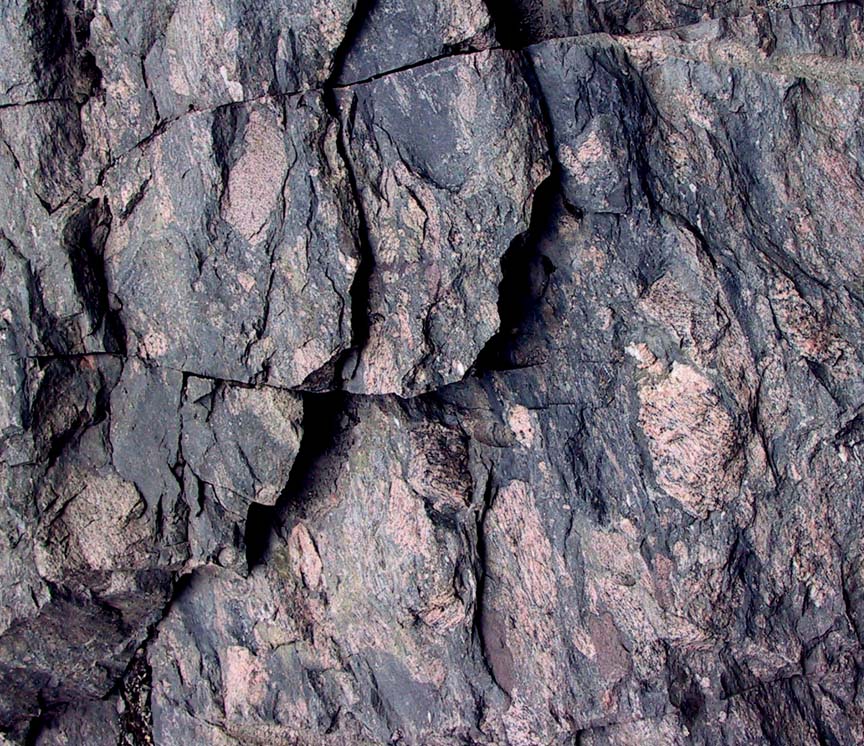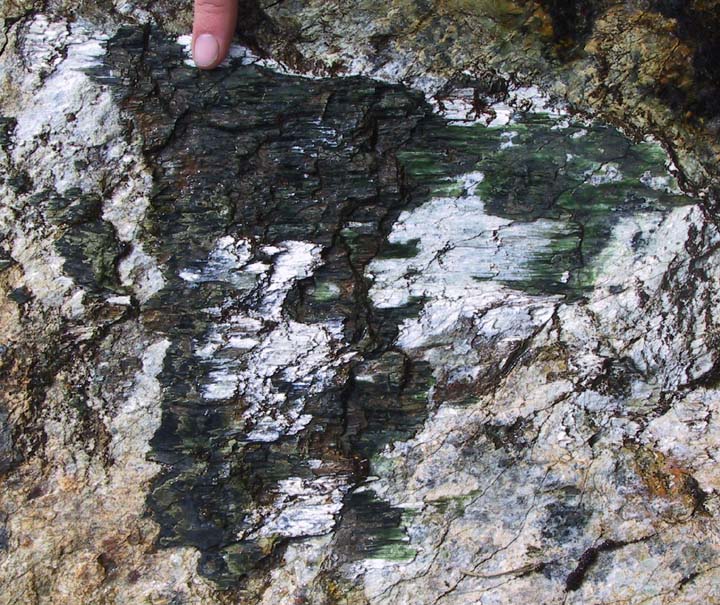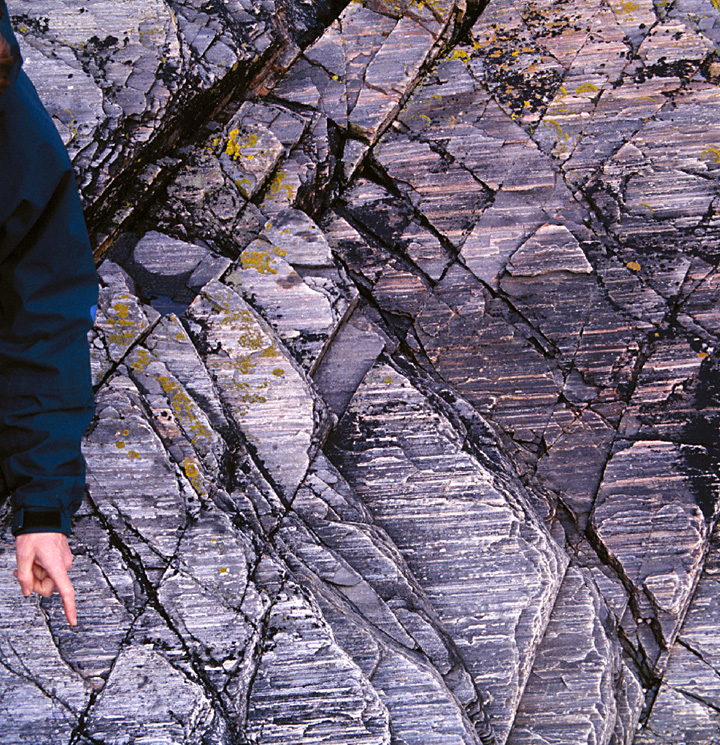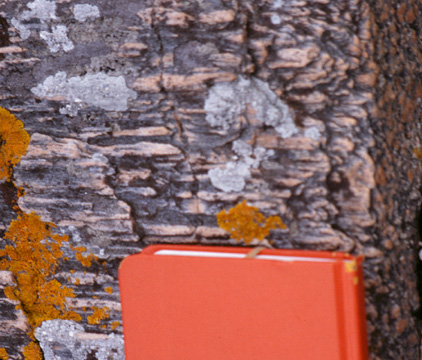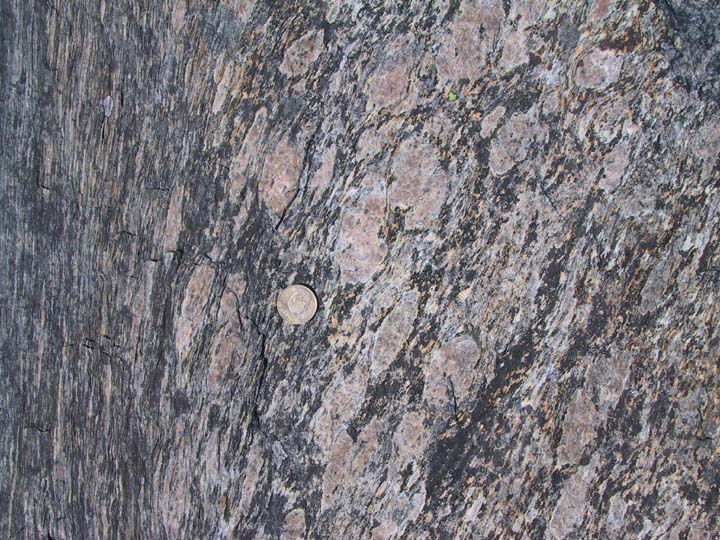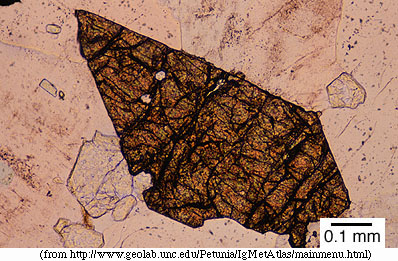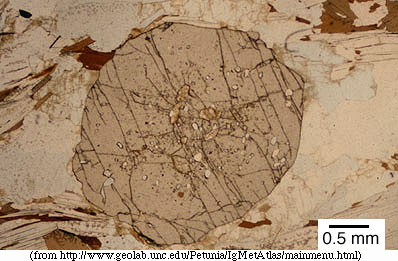cleavage: a foliation formed by platy minerals
such as mica. Most commonly used to describe low-grade micaceous
(pelitic) rocks such as slate. The cleavage can be very planar, like in
this slate from the Sierra Nevada foothills:

or it can be wavy, like in this Tibetan rock:
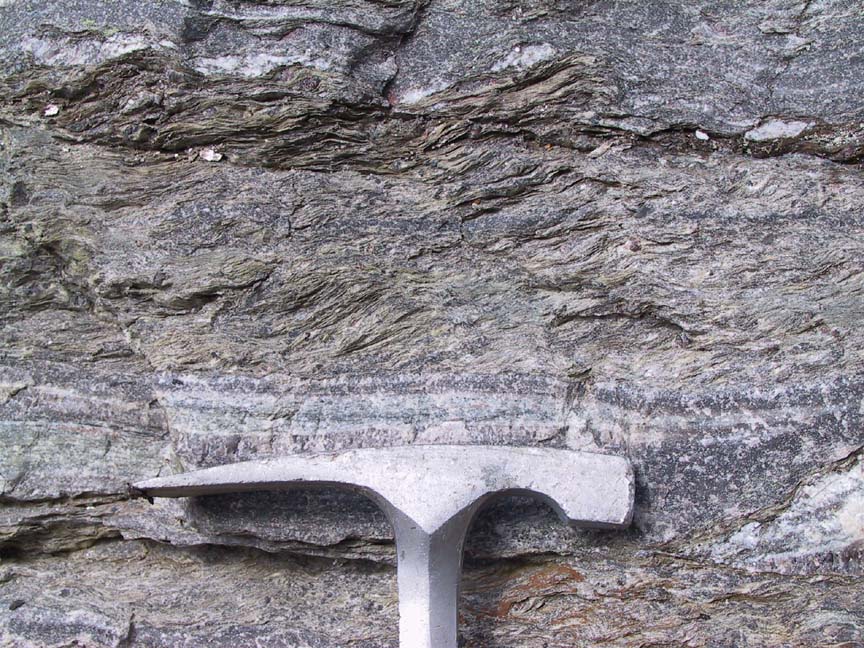
In favorable circumstances one can determine sense of shear, as in this \ock:

In thin section, the micas that form foliations and cleavages are clearly visible:

crenulation cleavage: a special kind of cleavage that forms as a result of shortening at a low angle to a pre-existing cleavage:


















